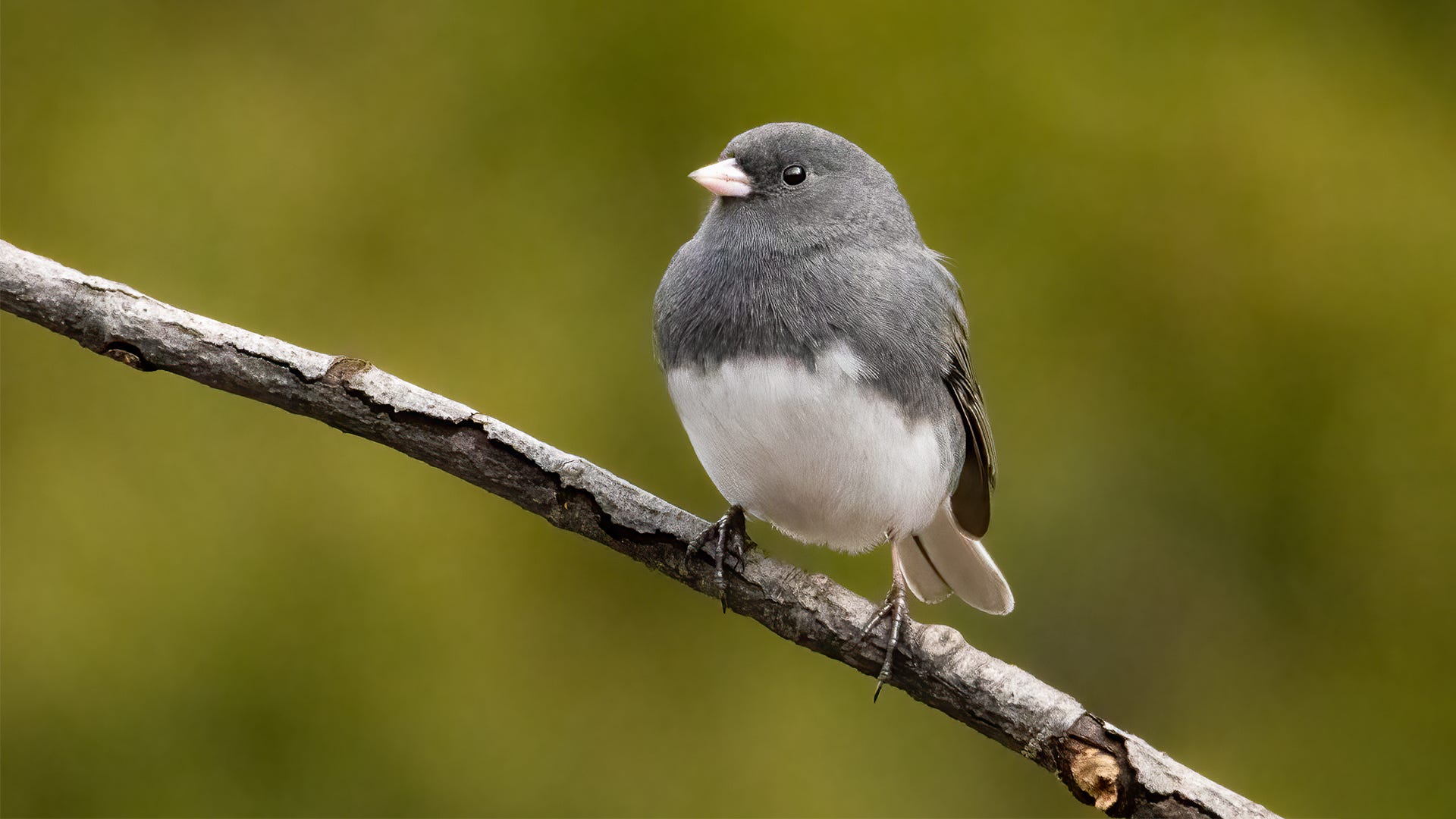Juncos are sweet little birds and can be charming visitors to your yard, if you can successfully attract them. What do you need to bring juncos to your yard, and when can you expect their visits?
Juncos and Their Subspecies
The dark-eyed junco (Junco hyemalis) is part of the Passerellidae bird family and a close relative of other New World sparrows, including the chipping sparrow, white-crowned sparrow, and eastern towhee.
There are several subspecies of dark-eyed juncos, including the widespread slate-colored variety with its gray upperparts and hood with a white belly. It's found throughout the eastern and central United States and much of Canada.
The Oregon subspecies, which has a darker hood contrasting with a gray back, white belly, and buff wash on the flanks, is most common in the western and Rocky Mountain regions of Canada and the United States into northern Mexico.
The gray-headed variety has a reddish back and gray upperparts, and is found primarily in the mountain regions and southwestern United States as well as northern Mexico. All of these junco species have pale, triangular bills and white outer tail feathers that flash as they fly.
While each subspecies may look quite different, they all share habitat preferences and are most often found in brushy, scrubby forests. Both coniferous and deciduous forests are ideal for juncos. These birds generally stay lower, closer to the ground, and feed on the ground as they hop about. They are relatively social and may be found in small flocks, even mixing with other sparrow species and ground-feeding birds such as bluebirds.
Dark-eyed juncos are more widespread in the winter months, and are often called “snowbirds” because they appear in backyards most often when snow is on the ground. Attracting these energetic birds is easy, if you make your yard junco-friendly to meet their needs.

Best Foods for Dark-Eyed Juncos
Juncos eat seeds and grain, with insects making up a good part of their diet during the breeding season. That's when hungry hatchlings need extra protein for healthy growth. Planting seed-bearing plants in the yard, such as chickweed, sorrel, or seed-bearing flowers like cosmos and coneflowers, will attract juncos with a natural food source. At the same time, insecticide use should be minimized so there are plenty of beetles, ants, and caterpillars for juncos to eat.
At a feeding station, juncos will happily munch on millet, sunflower hearts, and cracked corn. These small
sparrows prefer ground-level feeders or broad, open trays. There, they can easily perch and still have a good view
of the surrounding area. You can sprinkle seed directly on the ground for juncos, and these birds will happily
clean up under hanging feeders.
In autumn, juncos energetically forage through leaf litter for fallen seeds as well as insects and grubs. Leaving leaf litter intact will not only provide juncos with extra natural food, but will also help them feel more comfortable and secure in the yard.
Because juncos are frequent winter guests, it is important that feeders be protected from snow and ice that can bury seeds. Feeders with broad roofs or wide upper baffles are ideal. You can also sprinkle seed under an outdoor table or under the edge of a deck so it stays accessible for hungry juncos.

Attracting Juncos With Water
Juncos can easily melt snow in their bills for a quick drink, but providing fresh, clean, liquid water is a great way to attract these birds. In winter, a heated bird bath is very helpful and will attract many birds looking for an easy drink. Broad, low baths are best for juncos and will give every member of a flock of birds a good chance for a drink. Positioning the bath near dense shrubs or other cover will also help these birds feel more secure.
See also: How to Choose the Perfect Bird Bath or Water Feature for BirdsAt no time should any salts, antifreeze, or other chemicals be added to any bird bath to keep the water from freezing. These additives are highly toxic to birds and wildlife.
Providing Shelter for Dark-Eyed Juncos
These small birds will readily use all types of shelter. Coniferous and deciduous trees and shrubs provide perfect natural shelter. Pruning should be minimized in late autumn so the cover is as dense as possible for maximum protection. Any branches that are pruned can be added to a brush pile for extra shelter. Juncos will even tuck themselves into openings in a wood pile to stay protected from poor weather or to hide from predators.
Extra shelter is always welcome in winter. Juncos will use roost boxes at night, with several birds tucking in to the box together to share body heat in the cozy space.
In spring and summer, providing nesting materials like pine needles, animal fur, and moss can encourage dark-eyed juncos to nest nearby. The same shelter that protects these birds in winter will provide ideal nesting sites for the next generation of baby juncos.
See also: Please Don’t Give Birds These Nesting Materials
Extra Tips for Attracting Juncos
While juncos will readily come to bird-friendly yards, there are extra steps any backyard birder can take if juncos aren’t already visiting.
- Discourage stray and feral cats, and keep pet cats indoors and away from these ground-feeding birds.
- Provide a wide, open feeding area where juncos will feel most comfortable, with a variety of their favorite foods available.
- Clean up feeding areas regularly so spoiled seeds, feces, and rotting hulls will not accumulate.
- Consider using caged bird feeders to give juncos an easier chance to eat without being disrupted by larger, more aggressive species.
Dark-eyed juncos are attractive, curious, energetic birds that can be very entertaining in the yard. By providing appropriate food, water, and shelter for these popular snowbirds, you’ll be able to enjoy them in your yard throughout the year.
See also: How to Attract Cardinals to Your Bird Feeder







